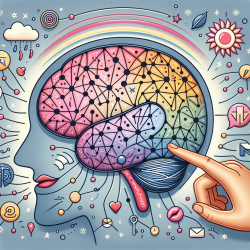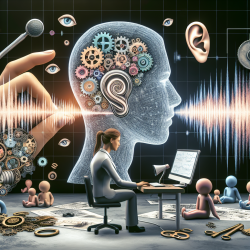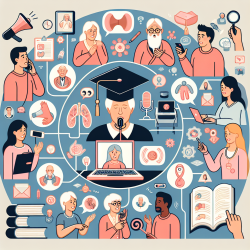Understanding Aphasia and Brain Connectivity
Aphasia, a language disorder commonly resulting from a stroke, often affects the left hemisphere of the brain, where language processing is typically localized. However, recent research suggests that the right hemisphere also plays a crucial role in language recovery, particularly through compensatory mechanisms. A study titled "Simultaneous Normalization and Compensatory Changes in Right Hemisphere Connectivity during Aphasia Therapy" sheds light on this phenomenon.
Key Findings from the Study
The study involved four participants with aphasia and eight healthy controls. Using functional MRI (fMRI) scans, researchers assessed changes in brain connectivity before and after a phonological treatment known as Phonological Components Analysis (PCA). The results were intriguing:
- Normalization: Post-treatment, the connectivity patterns in participants with aphasia began to resemble those of healthy controls, indicating a normalization of neural processes related to language retrieval.
- Compensation: Specific connections in the right hemisphere showed increased activity, diverging from the patterns seen in healthy controls. This suggests that the right hemisphere was compensating for the damaged left hemisphere.
Implications for Practitioners
For speech-language pathologists and therapists, these findings emphasize the importance of considering both hemispheres in aphasia therapy. Here are some practical takeaways:
- Incorporate Right Hemisphere Strategies: Develop therapy approaches that engage the right hemisphere, such as tasks that involve visual-spatial processing or music-based therapies, which can stimulate right hemisphere activity.
- Monitor Neural Changes: Utilize neuroimaging techniques, when possible, to track changes in brain connectivity and adjust therapy plans accordingly.
- Encourage Cross-Hemispheric Collaboration: Design interventions that promote interaction between hemispheres, fostering both normalization and compensation.
Encouraging Further Research
While this study provides valuable insights, it also highlights the need for further research. Practitioners are encouraged to explore the following areas:
- Longitudinal Studies: Conduct long-term studies to understand the durability of treatment-related changes in brain connectivity.
- Individual Differences: Investigate how individual differences in brain structure and function affect therapy outcomes.
- Multimodal Approaches: Examine the efficacy of combining different therapeutic modalities, such as cognitive and physical therapies, in enhancing language recovery.
By integrating these findings into practice, speech-language pathologists can enhance their therapeutic approaches, ultimately improving outcomes for individuals with aphasia.
To read the original research paper, please follow this link: Simultaneous Normalization and Compensatory Changes in Right Hemisphere Connectivity during Aphasia Therapy.










